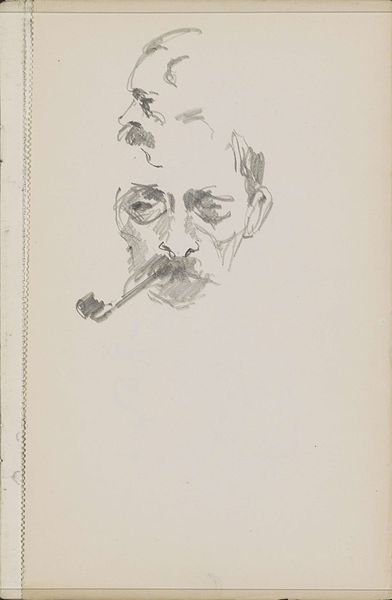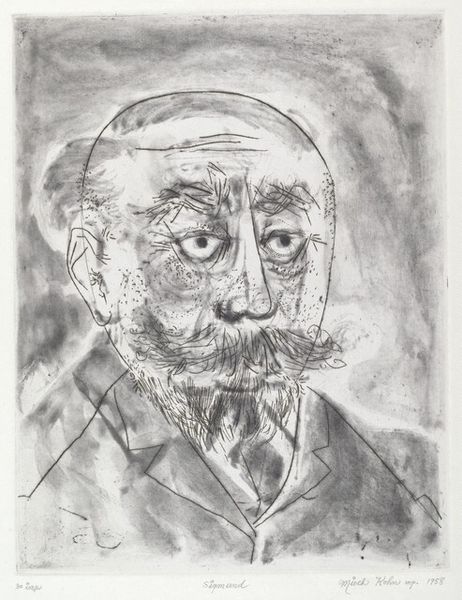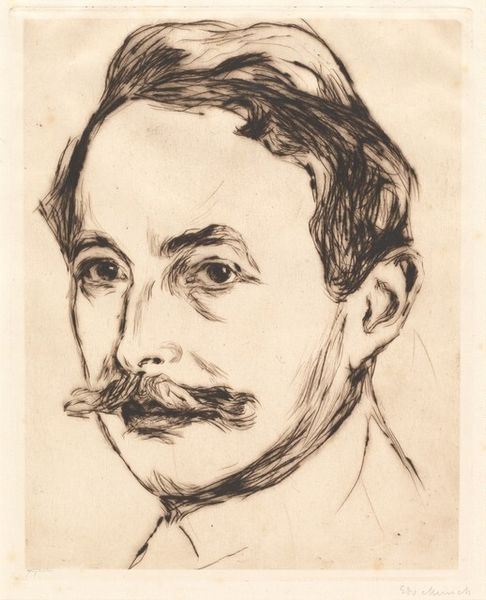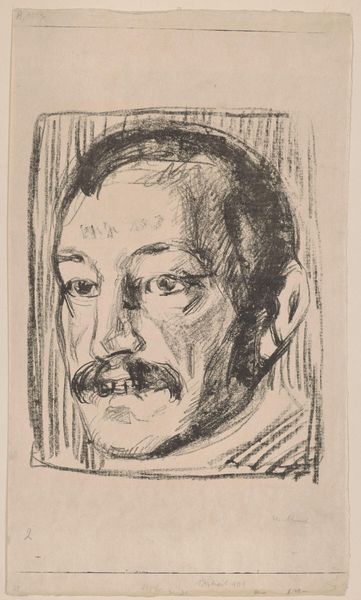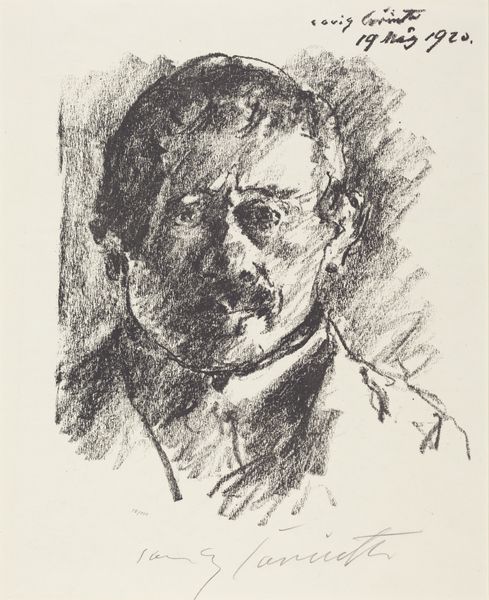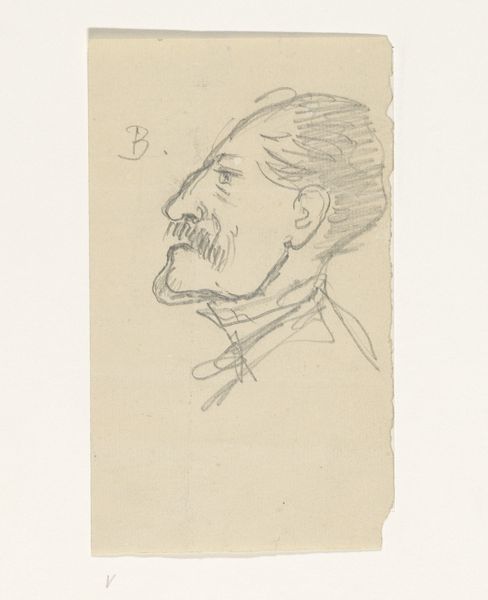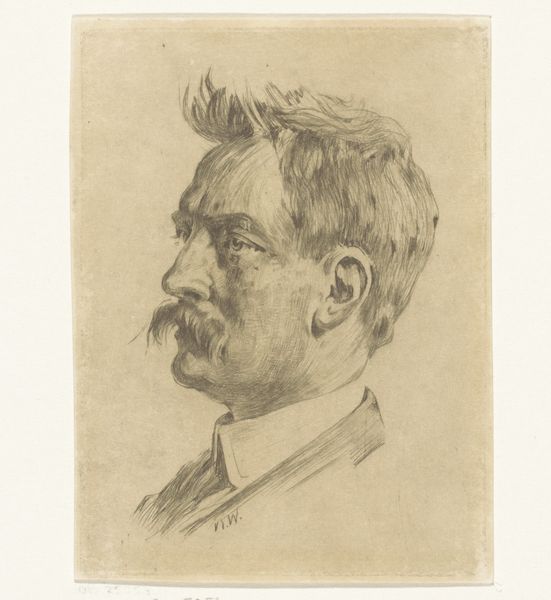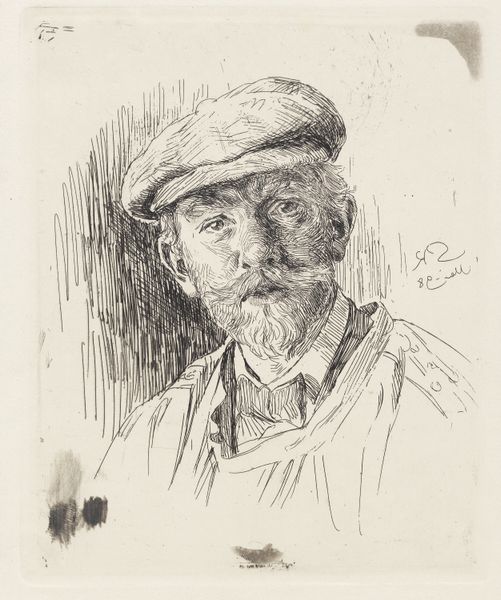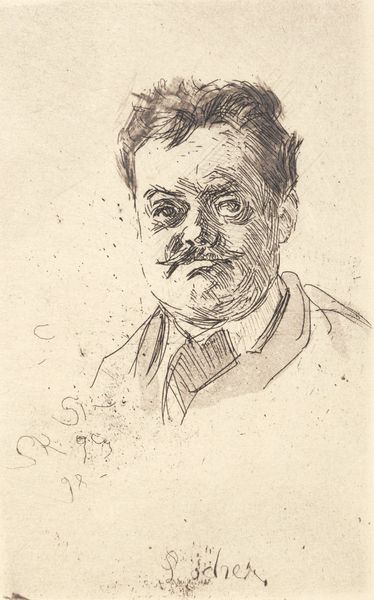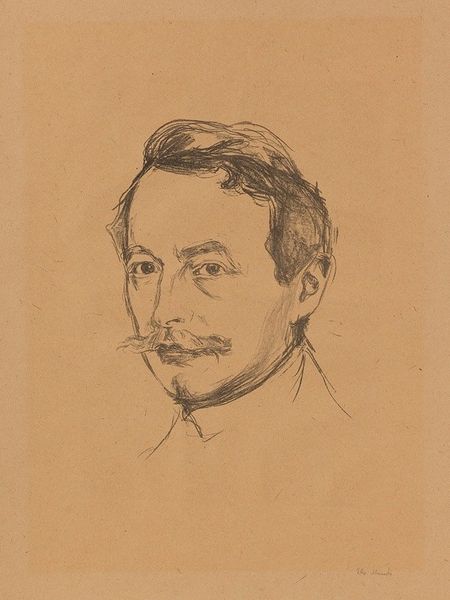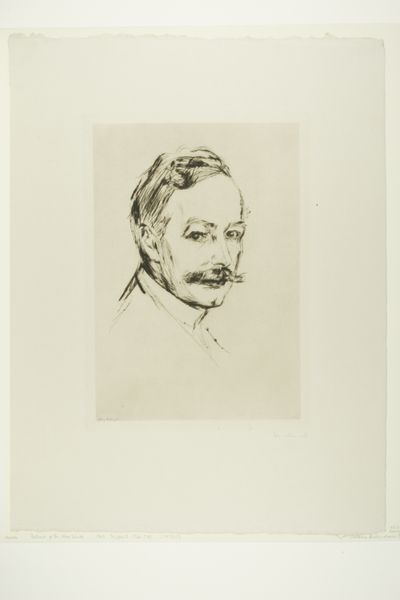
Copyright: Public domain
Editor: This is "Pencil sketch of the head of Belgian poet Émile Verhaeren," created by Theo van Rysselberghe in 1915. It's a surprisingly intimate portrait, given it’s just a pencil sketch. The lines are so delicate, particularly around the eyes. What strikes you about its composition and technique? Curator: The composition adheres to a classical structure: a focus on the head, allowing for nuanced expression. However, Rysselberghe's handling of the medium diverges from strict realism. Note the varied densities of line – how certain areas, such as the mustache, are rendered with greater complexity than others. Editor: So, the varying pressure of the pencil contributes to the overall effect? Curator: Precisely. The sketch gains its dynamism not merely from accurate representation but from the rhythmic variation of line. Consider, too, how the starkness of the paper is used; it’s not simply a backdrop but an active element in defining the form. What would you say about the tonal range deployed in this pencil work? Editor: It seems quite subtle; the contrast isn't dramatic, but creates volume nonetheless. Is it possible the lightness contributes to the sense of vulnerability that I'm perceiving? Curator: Indeed, the restricted tonal palette contributes significantly to the mood. Rysselberghe prioritizes subtle gradations, and this imbues the sketch with an air of introspection, highlighting Verhaeren's intellectual sensitivity. Do you notice the deliberate lack of background detail and its impact on how the gaze is channeled toward Verhaeren's expression? Editor: It definitely intensifies the focus on his face and eyes, making you really study his expression. I never considered how important empty space could be! Curator: It acts as a void, emphasizing the sitter’s presence. Through a limited palette and varied pencil strokes, Rysselberghe achieves not just likeness, but a poignant exploration of character, wouldn't you agree? Editor: Absolutely. I now recognize how much can be communicated through subtle manipulation of such simple materials.
Comments
No comments
Be the first to comment and join the conversation on the ultimate creative platform.

